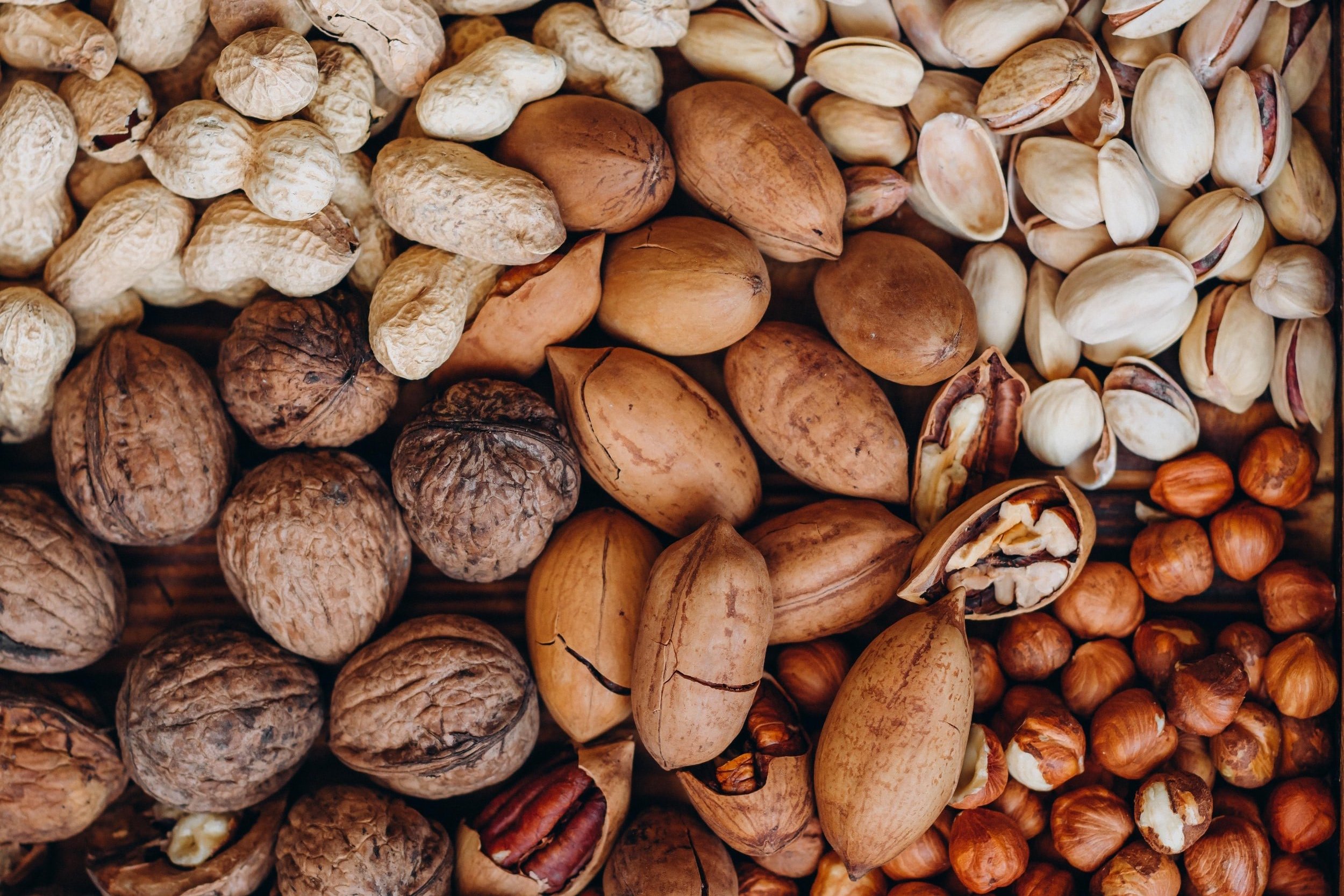
Macro- and Micronutrients
Our lives greatly rely around food. Food is used in celebrations, going out with friends, and bringing a family together at the end of the day, among many other events. In addition to the social aspect that food offers, it also provides the energy and nutrients the body needs to properly grow and develop. These nutrients are divided into two categories - macronutrients and micronutrients. Nutrients are categorized depending on the nutrient’s structure, physiological functions, and recommended daily intake. This article will briefly explain the benefits and food sources for the macro- and micronutrients.
The three main food types that are required in large amounts in a person’s diet are proteins, fats, and carbohydrates, otherwise known as macronutrients (1). Macronutrients serve many functions within the body, such as supporting cell growth and integrity (2), maintaining normal hormone levels (3), and improving the immune system. There is a vast array of food sources for these macronutrients; protein can be found in foods such as meat, poultry, seafood, and some plants, fats can be found in foods like plant oils, butters, nuts, and seeds, and carbohydrates can be found in food sources such as whole grains, beans and legumes, and fruits and vegetables.
Micronutrients consist of vitamins and minerals and are required in small amounts in the diet (1). Like the macronutrients, micronutrients also aid in the overall health and wellbeing of an individual by assisting in proper enzymatic functions (4), hormone regulation, neurologic functions (5), cellular integrity, among many other attributes. Micronutrients can also be found in many food sources, including meats like red meat, poultry, and seafood, dairy products, whole grains, nuts and seeds, and fruits and vegetables.
Overall, by understanding the benefits of consuming these macro- and micronutrients, supplying the body with these nutrients will allow them to synergistically work together to provide the building blocks for muscle, RNA and DNA, support normal growth and development, and improve the body’s integrity and composition. The following articles dive deeper into each macro- and micronutrient to help learn more about the benefits and food sources of these nutrients.
Written by: Siri Pederson
Last edited: 05/11/2022
-
Gropper SS, Smith JL, Carr TP. Advanced Nutrition and Human Metabolism. 8th ed.; 2021.
Hac-Wydro K, Zajac A, Dynarowicz Latka P. The influence of plant stanol on phospholipids monolayers - The effect of phospholipid structure. Journal of Colloid and Interface Science. 2011;360(2):681-689. doi:10.1016/j.jcis.2011.04.089
Alberts B, Johnson A, Lewis, J. Protein Function. Molecular Biology of the Cell, 4th edition. 2002;4. Accessed April 18, 2022. https://www.ncbi.nlm.nih.gov/books/NBK26911/?_ga=2.209949973.149134003.1649866263-1450360983.1630966593&_gl=1*1svieq4*_ga*MTQ1MDM2MDk4My4xNjMwOTY2NTkz*_ga_7147EPK006*MTY0OTg2NjI2Mi40LjAuMTY0OTg2Njc1My4w*_ga_P1FPTH9PL4*MTY0OTg2NjI2Mi4xLjAuMTY0OTg2Njc1My4w
Taniguchi M, Fukunaka A, Hagihara M, et al. Essential Role of the Zinc Transporter ZIP9/SLC39A9 in Regulating the Activations of Akt and Erk in B-Cell Receptor Signaling Pathway in DT40 Cells. PLoS ONE. 2013;8(3). doi:10.1371/journal.pone.0058022
Kirkland AE, Sarlo GL, Holton KF. The role of magnesium in neurological disorders. Nutrients. 2018;10(6). doi:10.3390/nu10060730







